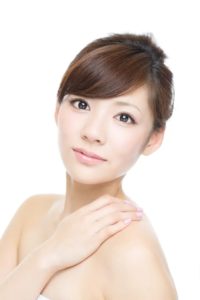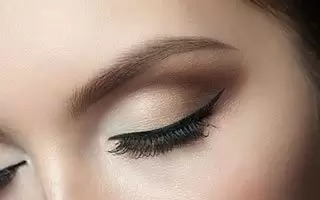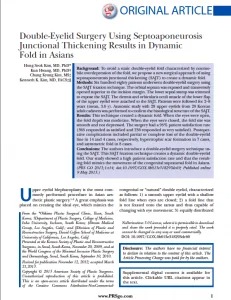Contents
- 1 About Asian Eyelid Surgery
- 2 Eyelid Surgery Methods
- 3 Crease Options
- 4 Fold Heights Can Create Different Results
- 5 Asian Eyelid – Benefits
- 6 Candidates
- 7 Dr. Kennth Kim – Los Angeles Asian Eyelid Surgery Expert
- 8 Preparation Ahead of Surgery
- 9 Recovery
- 10 Results of Eyelid Surgery
- 11 Cost of Asian Eyelid Surgery in Los Angeles
- 12 Los Angeles Asian Eyelid Surgery FAQs






 The suture technique takes approximately thirty minutes to an hour, and because it is less invasive produces a quick recovery with minimal swelling. Stitches may or may not be removed and the final results will be present within one to three months.
The suture technique takes approximately thirty minutes to an hour, and because it is less invasive produces a quick recovery with minimal swelling. Stitches may or may not be removed and the final results will be present within one to three months. Another reason to perform epicanthoplasty is to convert the double eyelid fold from an infold to an in-out fold or an outfold.
Another reason to perform epicanthoplasty is to convert the double eyelid fold from an infold to an in-out fold or an outfold. During your private meeting with Dr. Kenneth Kim, you will have the opportunity to share your concerns and desired appearance. Dr. Kenneth Kim will listen carefully and ask about your health, past procedures, skin care, medication routine, and allergies. This information will help him determine if eyelid surgery is a healthy option for you. He will then examine your eyes and discuss your options. Together, you and Dr. Kenneth Kim will create a treatment plan appropriate to your concerns and complementary to your appearance.
During your private meeting with Dr. Kenneth Kim, you will have the opportunity to share your concerns and desired appearance. Dr. Kenneth Kim will listen carefully and ask about your health, past procedures, skin care, medication routine, and allergies. This information will help him determine if eyelid surgery is a healthy option for you. He will then examine your eyes and discuss your options. Together, you and Dr. Kenneth Kim will create a treatment plan appropriate to your concerns and complementary to your appearance.







